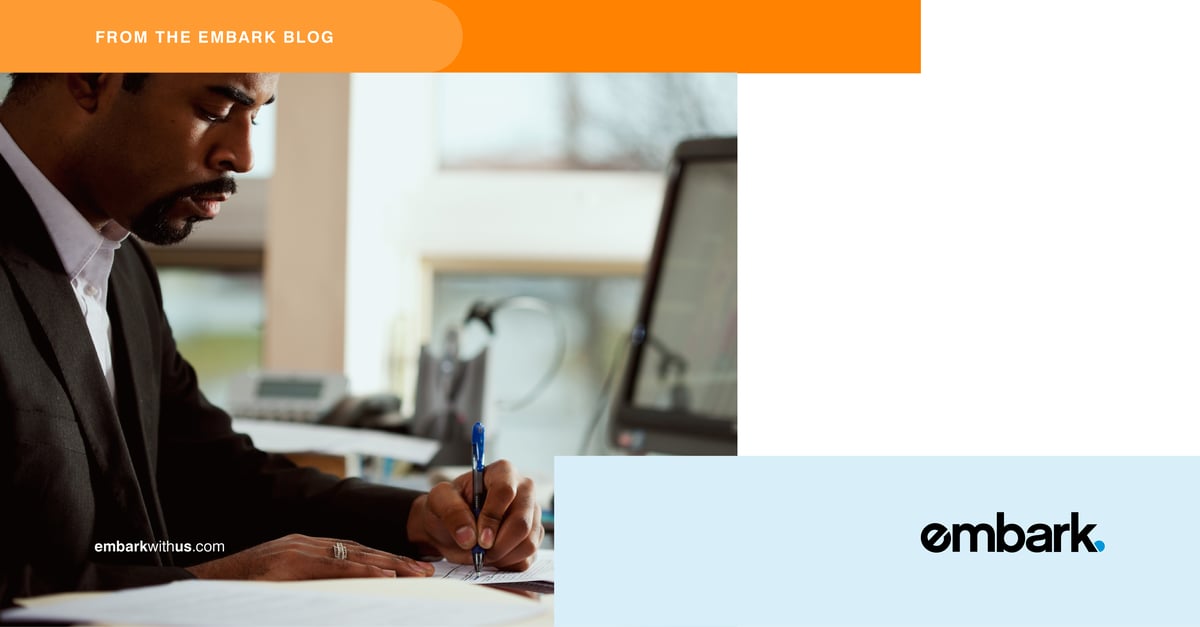 The best things in life – and business – are worth a little elbow grease. Take the rolling forecast, for example. Lending agility, foresight, and flexibility to leaders and their organizations, the rolling forecast is an operational GPS unit that can lead your company through even the roughest, most uncertain economic terrain. That is, if you implement and maintain it correctly.
The best things in life – and business – are worth a little elbow grease. Take the rolling forecast, for example. Lending agility, foresight, and flexibility to leaders and their organizations, the rolling forecast is an operational GPS unit that can lead your company through even the roughest, most uncertain economic terrain. That is, if you implement and maintain it correctly.
But the term "correctly" is relative, possibly helping one organization meet its objectives, grow, and thrive, while turning into an operational Hindenburg for another. So to make sure you're in the former of those two categories, we're going to take a closer look at the rolling forecast, its potential benefits and drawbacks, and provide some insights for your FP&A team on both implementing it and optimizing its value to your business.
What is a Rolling Forecast?
Perhaps the best way to define a rolling forecast is to explain what it isn't – a static budget. And while we'll expand on the differences between the two in just a bit, the dynamic, ever-evolving nature of a rolling forecast is at the heart of the benefits it provides to decision-makers.
Simply put, a rolling forecast is either a report that works in conjunction with traditional annual budgeting or, at least theoretically, completely replaces the tried-and-true annual budget process finance leaders are already so familiar with. This forecast uses historical information and current data to peer down the road, providing glimpses into future revenue, expenses, and overall business performance based on that historical data.
Further, a rolling forecast evolves with time, refining itself by integrating current data as it arrives. So, for example, an unexpectedly high-performing Q1 may shift the forecasted metrics for subsequent quarters upward. Likewise, increased economic uncertainty or falling consumer demand could shift forecasted data downward. In both instances, you’re providing a more accurate, relevant footing for ongoing decision-making, operational strategy, and resource allocation, amongst other areas of operations.
When building out a rolling forecast, companies can choose the most insightful timeframe to focus on, typically a four or six-quarter time horizon. No matter the period, though, what’s most important is continually integrating business data as it comes in, ideally every month for most businesses.
Since your FP&A team – the rulers of the rolling forecast castle – simultaneously adds a new forecast period to the end of the report as they update the data, this "rolling" approach provides a seamless, evolving look at financial drivers and performance. Ultimately, a rolling forecast ensures leadership continues to have as close to real-time insights as possible for the foreseeable future.
The Benefits of a Rolling Forecast
Real-time insights. Besides an actual crystal ball, can you think of a more powerful asset for organizations, particularly in a business environment still swimming in risk and uncertainty? Probably not.
But that's exactly what the rolling forecast can provide to your organization and decision-makers – relevant, timely business information that informs any strategic changes you might need to navigate that crowded, complex, often contentious marketplace. Moreover, for public companies, the rolling forecast allows you to update your guidance as well, giving users of your financial reports the most pertinent information possible on your operations and performance.
Whether public or private, however, a rolling forecast lends itself to a more in-depth, nuanced look at your operational inputs and business drivers. Thus, to use a real-world example, when inflationary forces quickly drive up your costs of labor and materials, smacking your cash flow in the jaw, a rolling forecast is pliable enough to absorb that new data, adjust the forecast accordingly, and give your decision-makers more accurate information for short-term strategic planning.
Rolling Forecasts vs. Static Budgets
That example really demonstrates the biggest differences between a rolling forecast and traditional static budget. When inflation – or supply chain disruptions, competition, volatile market conditions, or countless other economic factors and drivers – ramps up unexpectedly high in a short amount of time, it can render a static budget inaccurate at best, downright dangerous at worst.
Because unless you built those unexpected factors into your budget – and if that's the case, we want to go to Las Vegas with you – you're relying on numbers and assumptions that simply don't apply to the current climate.
However, as we said, when you're integrating new business data into your forecasts on a monthly or quarterly basis, you're continuously providing your decision-makers with – once again – real-time information. Such data on increased labor costs, material costs, or any other business drivers could and often should alter your short-term, sometimes even long-term, strategic decision-making.
Potential Drawbacks of a Rolling Forecast
But, alas, nothing is perfect in this world, even a potential financial planning powerhouse like a rolling forecast. But it's not so much the forecast itself that is problematic but its implementation.
As you know, accounting and finance folk aren't usually excited to embrace change. And that's an understatement. In fact, people generally tend to avoid new concepts and tools that are outside their comfort zones. Of course, such trepidation doesn't exactly bode well for any new initiative, rolling forecast or otherwise.
Therefore, one of the biggest drawbacks of rolling forecasts is simply establishing buy-in from the different stakeholders and users involved. Yes, you can explain to them in great detail how much a rolling forecast will improve your organization's decision-making and overall agility. However, like it or not, until you can demonstrate how it will positively impact their roles and responsibilities, they'll likely only see a rolling forecast as yet one more task to manage on their already overflowing plates.
Also, unless you, as an organization, make a continuous and lasting commitment to updating those business drivers as frequently as possible in your forecast, you're probably doing more harm than good. Think of a rolling forecast like planting a vegetable garden – it works great in theory but requires consistent watering.
The bottom line – building and implementing a rolling forecast model can be a time-consuming, hefty lift for a CFO and their team, and requires commitment from everyone involved.
Implementing a Rolling Forecast
Thankfully, as we said up top, the right guidance can be the difference between an effective rolling forecast and a waste of time, effort, and resources. And because we like you and want to see you succeed, we're sharing some of the insights we've amassed from the FP&A trenches.
Charting Your Course
To ensure you establish a sound footing and sense of direction before heading down the rolling forecast highway, we've come up with five simple questions you should address first:
- Do you have the needed project and change management pieces in place to help ensure your implementation is successful?
We've spoken at length on project and change management in the past so we won't completely repeat ourselves here. However, particularly with respect to the drawbacks we mentioned a bit earlier, something like change management is critical to establishing buy-in from your people, training them, and integrating a rolling forecast into your current workflows.
- What is driving your business?
Think about the many metrics and KPIs you already track or could track. It's a lot, right? Well, some of those drivers are more important than others in building a forecast that meets your objectives. Thus, you want to fully understand your business drivers before constructing your forecast reports, especially what to include and leave on the sidelines.
- Can your current data environment and systems support the level of detail you want to include in your forecast?
As we said, building out and implementing a rolling forecast is no small task. So to avoid manual data jockeying for your people, you want to ensure your data environment is clean and systems are up to the task. Thankfully, there's plenty you can do to clean up chaotic data repositories and multiple, entangled data systems.
- What processes will you need to either update or create to ensure consistent data integration?
Building on the previous question, not only does the data have to be accessible, but you need processes in place to ensure you're continually adding the most current business information into your forecasts. Without it, you will never be able to provide leadership with the real-time insights they need to traverse the potholes and detours that inevitably arise.
- What external tools, if any, will you initially need for your forecast?
Sure, specialized, purpose-built tools can provide an absolute ton of value to your rolling forecast implementation – especially for more complex financial models and larger organizations. But there's still plenty you can do with good ol' Excel, so you'll want to figure out if investing in a specialized FP&A or financial forecasting solution is a sound investment for your business and objectives.
Technology Is Your Friend
Obviously, with four of our five questions dealing with data in some way, a discussion on technology is well-placed. And while it’s absolutely true Excel will suffice for many companies, at least initially, technology can also be a game changer of the highest order for organizations and their financial planning aspirations.
First of all, to debunk a popular myth out there, dedicated FP&A tools don’t have to be enormously complicated and difficult to use. There are plenty of low- or no-code solutions available – Planful, Adaptive, and OneStream, to name a few – that are easy to both implement and use. Therefore, while resource allocation is a perfectly valid reason for sticking purely with Excel, difficulty of implementation or use shouldn’t be, assuming you choose the right solutions for your team, needs, and objectives.
Also, on the ease-of-use front, many of these newer tools even integrate directly into existing ERPs, data lakes, and data warehouses, efficiently pulling and pushing data as needed. And unlike legacy and old fashioned on-prem solutions organizations tailored to their specific needs – and often need a fleet of IT gurus to maintain – the new, cloud-based tools are simple for even the most IT-illiterate finance professionals in the world. We’re not pointing any fingers, of course, but just throwing that out there. Nudge, nudge, wink. wink.
Rolling Forecast Implementation Steps
Addressing the questions we posed will provide a handy foundation you can build from when implementing a rolling forecast. But to actually roll up your sleeves and set the initiative in motion, you will want to follow a few straightforward steps:
- Conduct a full audit across your organization, identifying the data you will need and the people involved
- Pull all of your relevant business driver data into a centralized location
- Take that data and feed it into whatever tool or tools you'll use to build the forecast, whether that's exclusively spreadsheets or the no- or low-code solutions we discussed
- Present the financial results to the organization and your stakeholders
Granted, you’ll need to absorb plenty of ongoing responsibilities after your implementation, so your work is nowhere near done. Going forward, you must constantly communicate with your board, investors, and all key internal stakeholders on any updates to your forecast that will diverge from your original budget.
Put another way, you need to keep everyone involved apprised of what's happening in your forecasts and how it's impacting your strategic business decisions. Just because your finance team finishes an update and presents it to your C-suite and board doesn't mean it disappears into thin air.
Remember, there will inevitably be questions, sometimes even pushback on your forecast reports, so finishing an update and presenting it is a stage in the rolling forecast process, not the finish line.
Rolling Forecast Best Practices from Embark
While, at least in theory, a rolling forecast can replace an old-fashioned annual budget, that's just not feasible for most organizations. Practically speaking, it's usually best to use a rolling forecast in conjunction with your typical budgeting process, providing flexibility and timely insights without completely reinventing the financial planning wheel for your business.
Also, if you've taken anything from these musings, it should be the importance of reliable financial data to the forecasting process – and FP&A in general. To that point, don't underestimate the endless benefits a finance transformation will bring to the equation, automating otherwise manual processes, eliminating inefficiencies, and fostering business intelligence through data dashboards, ERPs, and the like.
In short, backstopping your financial planning process with the streamlined efficiencies of a transformation is like adding an octane boost to an already potent tool. And if you need any help or guidance along the way, your FP&A and transformation specialists here at Embark are ready to roll up their sleeves and help you build market share.








